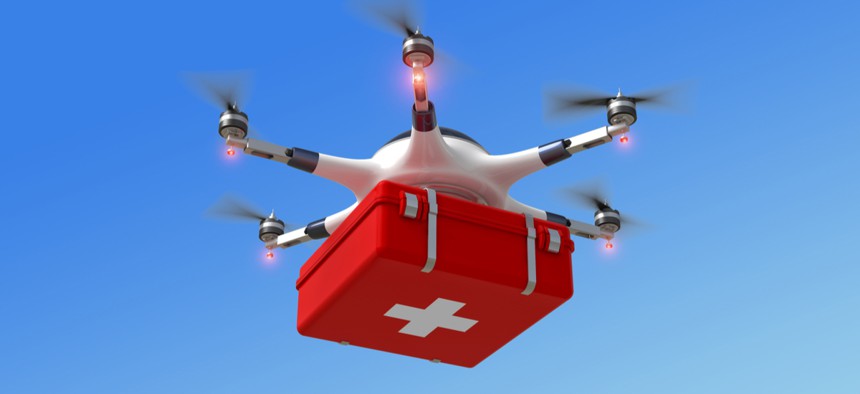A Medical-Delivery Drone Service Gets Approval Amid Coronavirus

gualtiero boffi/Shutterstock.com
ZipLine, whose drones have delivered more than 100,000 packages in Africa, will begin flights in North Carolina.
A medical-delivery firm has received special permission to fly its drones farther than previously allowed in the United States, a COVID-prompted decision that advances the nascent drone-delivery industry here.
ZipLine, which says its drones have flown more than 1.8 million hours delivering supplies in Africa, will fly supplies some 32 miles between a drone launch facility near Novant Health Huntersville Medical Center and the Novant Health Respiratory Assessment Center outside Charlotte, North Carolina.
The Federal Aviation Administration, which regulates flight over U.S. territory, granted ZipLine permission to deliver medical supplies beyond line of sight over civilian airspace.
Unmanned aircraft in the United States have largely been limited to line-of-sight flights, or government operations. The Department of Homeland Security, which flies General Atomics drones on surveillance missions over portions of the U.S. border, mounted a 275-mile demonstration flight from Yuma, Arizona, and Grey Butte, California. But that flight, like ZipLine’s upcoming delivery service, required a special waiver from the FAA.
Previous drone deliveries in the United States have largely been limited demonstrations for the media of under two miles. One exception was a 2017 demonstration in which a drone flew 97 miles over Texas to make a delivery, but observers were stationed at various points along the way to keep the drone in sight.
ZipLine’s primary focus has been medical supply delivery in parts of Africa. They claim they’ve conducted more than 1.8 million hours of flights beyond observers’ sight.
Last year, they announced a partnership with the Marine Corps to deliver blood to the front lines.
“Over the next two years, the partnership looks to expand beyond emergency operations in the Charlotte area to regular commercial operations serving health facilities and, ultimately, patients’ homes across the state,” they say in a statement.






